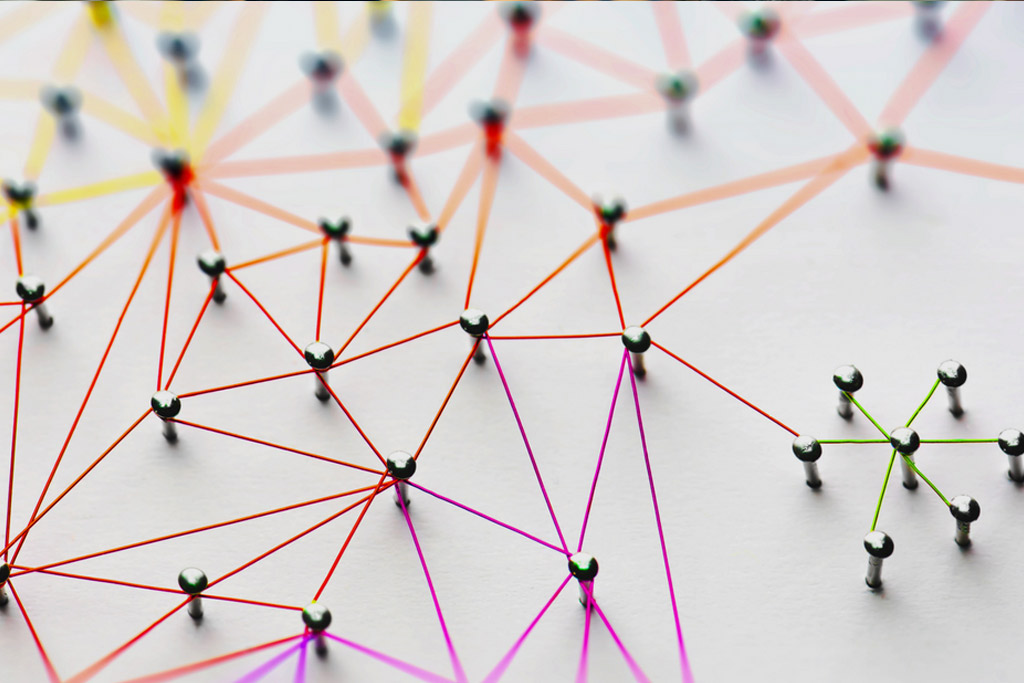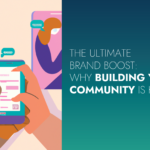Emily Elphinstone is a Digital Content Assistant here at Zahra Media Group, a former actor and a queen of linking internally. In this post, she explains the importance of linking to relevant content.
One of the most useful (if bizarre) tips I’ve ever received, is that when deciding where to place signage and personnel in order to guide attendees into an event, imagine that you’re trying to guide a sheep. Anywhere you think a sheep might go off course, you need signage, and/or a member of staff. Ideally, you need a member of staff, standing in front of a velvet rope, blocking a closed door with a sign on it. After all, people are very lazy when they can get away with it.
This is no less true online. If you want people to read something, you need to put it in their way. If you want them to continue reading, you need to link the page they’re on, to relevant articles they might also enjoy. They won’t necessarily carry on to other pages unless prompted, so links can greatly improve the customer experience.
But user experience is only part of why Internal Linking is important. Internal linking is also one of the most valuable search engine optimization (SEO) tools available, and understanding how you approach internal linking can either make or break your SEO.
What is Internal Linking?
Internal Linking is the inclusion of links that connect one page to another on the same website. Effectively, the purpose of internal linking is to direct visitors from one page to another, helping them to navigate the site, and find other pages that might be of interest to them.
Internal linking helps to distribute ‘link equity’ to internal pages – when your website receives a link to the homepage, some of the value of that link is passed on to other internal pages. Some pages on your site may have more link equity than others, so it’s important to pass some of that equity onto pages you’d like to improve rankings for, or pages that are more likely to engage visitors.
What are the benefits of Internal Linking?
It improves the indexation of your website. If your website has strong internal linking, it’s easier for Google’s web crawler to understand the layout of your site and the page relationships within it. This can help to establish a hierarchy of category pages, main pages, and subpages, and means that the web crawler can find, and index new content faster.
It reduces bounce rates. The bounce rate is the percentage of users who leave the site after viewing only one page. But with relevant links and anchor words, you can use internal linking to guide your users to other content they may be interested in. They effectively serve as a mini ‘call to action’ that keeps users on your site for longer. When users read an article and you then give them somewhere else to go once they have read it, it gives them a reason to stay on the site.
It guides traffic to older posts. A good proportion of traffic to eumom is generated by ‘evergreen’ posts, which may be older but which remain highly relevant to our core audience. This is why it’s important to remember how your website is continually growing and to pay attention to valuable older pages by adding relevant links to them. This will help Google and other major search engines to find these pages and to improve their rankings and will help your audience find the content they need.
They can help you to make a point. Links are a great way to back up the point you’re making. By showing you have related content on your website, it demonstrates a depth of knowledge and allows you to highlight specific articles which prove your point or expand your argument.
It can promote paid content. On eumom, we have sponsored content as well as organic articles, with targets for pageviews agreed at the beginning of each campaign. This means that it’s particularly important for us to encourage users toward these pages, both through promotion on social media, and by using internal linking to connect a sponsored post with relevant articles, making it easier for the target audience to engage with that product.
5 top tips for Internal Linking success
1. Include anchor text. An internal link is a simple piece of HTML code, connecting one page to another. When you create an internal link with anchor text (as opposed to an image or navigational text such as ‘click here’) the value of that link increases. Anchor text improves the value of the link by adding keywords to the linking process. Just make sure that your anchor text is related to the link, both to improve SEO and to encourage users to click, and try to avoid using the same anchor text to connect to two different pages as this creates competition between the two pages.
2. Remember that each page might be a landing page for your consumers. Since search engines index and rank each page of your site, each page could be a potential landing page for your site visitors. You never want to leave your traffic trapped on a random page of your site, as this will lead to a high bounce rate. However, internal linking helps you move traffic through your site: It makes navigation easier for the consumer, and creates shortcuts rather than having to return to the homepage.
3. Pages should be less than 3 clicks away from one another. From your homepage, there might be hundreds of links to internal pages. After one click, visitors can either connect to one of the internal pages, or a category page that can help them reach deeper into your website. From there, each category could have links that allow the visitor to access the deepest parts of the website, in order to find the content most relevant to them. Thus visitors should be able to reach their desired page in less than 3 clicks. Any more than three clicks (such as if users have to repeatedly click for older content) will put your visitors into a long pathway before they reach their desired page.
4. Links should be relevant and useful. Whenever a link is rarely clicked, it creates a bad signal for your page, which Google can pick up on – this could negatively affect your rankings. The best solution for this is to ensure that every time you produce a link on your pages, it is relevant and useful for your visitors.
5. Commit to your internal linking in the long term. Internal linking doesn’t always have an overnight dramatic overnight effect on SEO, so it’s important that you don’t give up on your strategy before it’s had time to take full effect. Even after launching a new ‘interlinking’ project a few months ago along with an updated metadata strategy, it is only now that the positive effect on SEO can fully be seen. In fact, eumom celebrated its highest SEO ever in January, with 338K of the 641,312 monthly pageviews coming from SEO.











